How Did Ancient Women Cope Without Sanitary Pads?

Today is Women’s Day in China, so let’s talk about some little – known historical facts about women. Modern sanitary pads have been in China for less than 40 years. So, during those days of their menstrual periods, what did ancient women wearing Chinese dresses use as a substitute for sanitary pads?
When it comes to period shaming, the inability to directly call menstruation by its name is the most immediate manifestation. This kind of shame exists worldwide. According to a joint survey by the International Women’s Health Coalition and the female menstrual cycle app Clue, in more than 190 regions around the world, there are over 5,000 terms used to refer to menstruation! To express views straightforwardly and accurately, Note: There’s no period shaming in this article!
In ancient times when there were no modern sanitary pads, women had their own “menstrual belts”. Menstrual belts were usually made of cloth. The interlayer was filled with things like plant ash, which were used for sterilization, water absorption, and drying. There were openings on both sides of the interlayer, so the filling materials could be replaced.
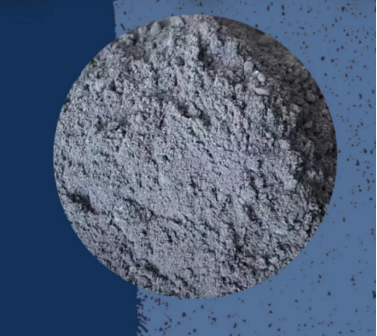
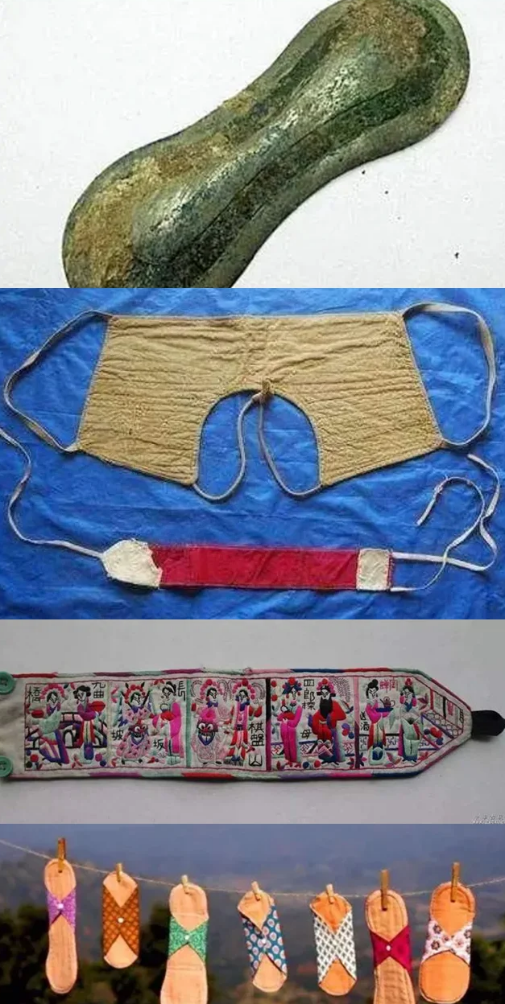
Here comes an explanation of the cleaning principle of plant ash: The core component of plant ash is potassium carbonate. This compound belongs to the category of weak – acid and strong – base salts. When it dissolves in water, it will release hydroxide ions due to a hydrolysis reaction. The resulting alkaline environment is conducive to accelerating the hydrolysis process of grease, thus achieving the purpose of removing dirt.
Precisely because it involves privacy, unlike today when we can buy sanitary pads in street supermarkets, the making of ancient “menstrual belts” was basically passed down orally from mothers to daughters. Since it was a personal item, women usually added embroidery and other decorations to their menstrual belts. The elaborate embroidery on the belts echoed the intricate patterns on traditional Chinese clothing
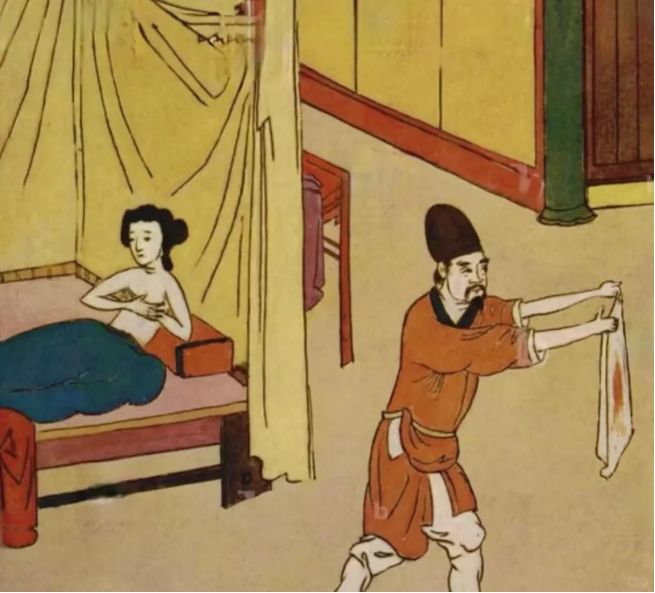
Li Shizhen mentioned in Compendium of Materia Medica that menstruation was regarded as something that could deplete men’s yang qi, so he warned men to stay away from women during their menstrual periods. In the general view of society at that time, women during their menstrual periods were not allowed to enter ancestral temples or temples, nor to worship deities. They were even prohibited from openly drying their menstrual belts. Surely, this sounds rather strange to us nowadays, but at that time, this rule really existed. Women not only had their living status squeezed, but also faced various kinds of restrictions in daily life. Indeed, modern life is much better.

What did ancient menstrual belts look like? We should be grateful for the physical object unearthed from the tomb of Huang Sheng (黄昇墓) in the Southern Song Dynasty. Generally, it was in a long – strip shape, 69 centimeters long and 11 centimeters wide, made of silk gauze, with straps that could be used to tie around the abdomen. This “menstrual belt” is currently the earliest known menstrual product in China. It is said that blood clots were still left on it when it was unearthed. Given Huang Sheng’s high – status burial, this menstrual belt likely harmonized with the elaborate Hanfu of the Southern Song Dynasty. Its silk gauze material matched the luxurious fabrics of traditional Chinese outfit like brocade and silk used during that era. The design, with its straps, would have been unobtrusive beneath the layers of Hanfu such as the long, flowing robes and wide – sleeved garments popular at the time, seamlessly integrating into the daily lives of women dressed in this traditional attire.
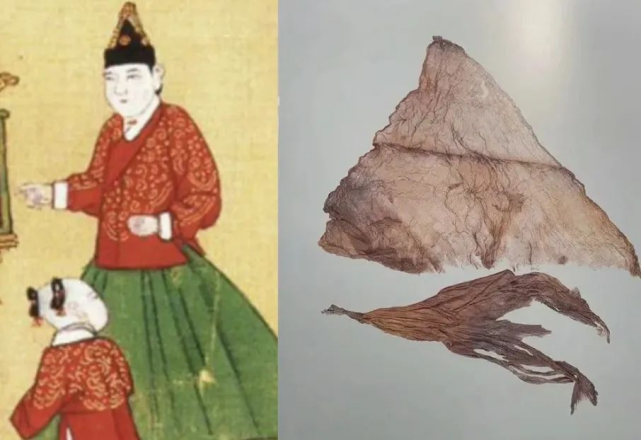
A similar “menstrual belt” was also unearthed from the Dingling Mausoleum, which was used by the mother of Zhu Changluo, Emperor Guangzong of the Ming Dynasty. It was 85 centimeters long and 35 centimeters wide, also with binding ropes. The two ends were wrapped around the waist, and one corner passed through the crotch, with the three corners meeting at the abdomen.
The quantity and fineness of these “menstrual belts” were also related to the family’s economic situation. It was quite normal for some people to use one for a long time. After use, they would wash, dry, and use it again. In the context of daily life, these menstrual belts were discreetly worn beneath layers of Ming – style clothing. For wealthy families, menstrual belts were made with fine materials, harmonizing with luxurious Hanfu featuring elaborate embroidery and high – quality silk. In contrast, commoners’ menstrual belts were simpler, in line with their more basic Hanfu made from coarse fabrics. This not only met their physiological needs but also ensured that their Hanfu remained neat and proper in appearance.
After the Eastern Han Dynasty, Cai Lun (蔡伦) invented papermaking (here it refers to the invention of papermaking technology, not the invention of paper), which truly popularized paper. Therefore, common people could use straw paper to replace plant ash, while the nobility could use more expensive and finer paper. So, thanks to Cai Lun, the water – absorption and softness of menstrual belts were effectively improved.
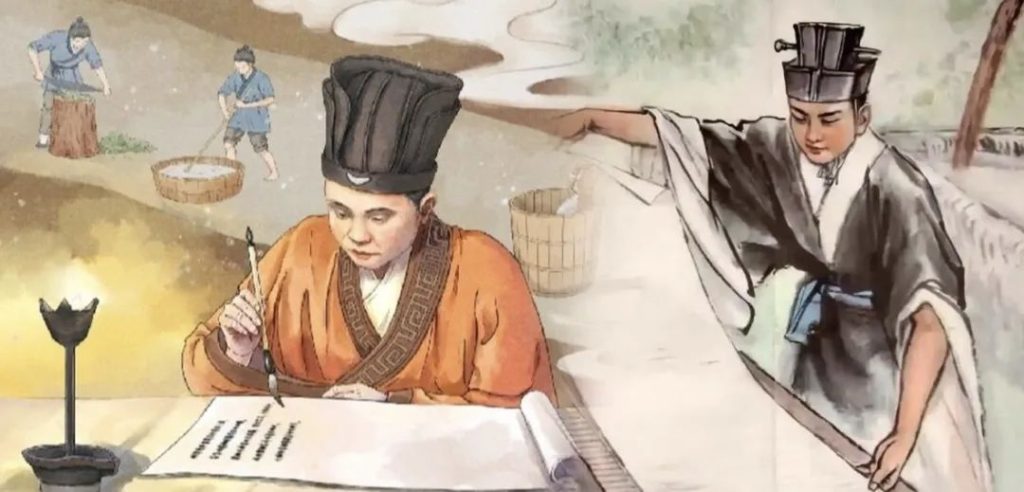
During the Yuan and Ming Dynasties, the cotton – planting technology in the Central Plains also developed. So in the Ming Dynasty, ladies could stuff cotton into their menstrual belts, which brought higher comfort.
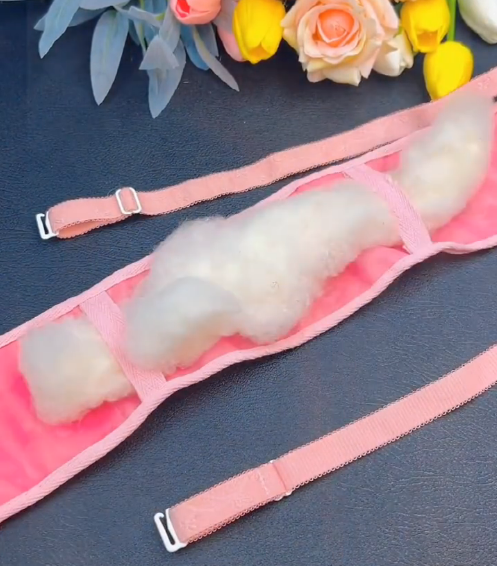
In 1928, the first imported sanitary pad advertisement in China, called “Reliable (靠得住)”, emerged. At that time, Hu Shi (胡适) was the one who campaigned for the freedom of using sanitary pads. He wrote the article “Research on Women’s Menstrual Cloths” (《女子月经布之研究》), advocating the healthy use of sanitary pads for women. However, at that time, people’s economic capabilities were generally not sufficient to afford this imported product.
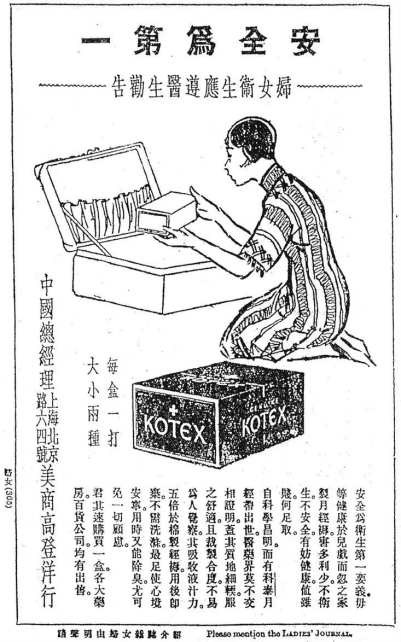
It was not until 1982 that China imported the first sanitary pad production line from abroad. With extensive production and promotion efforts, sanitary pads gradually entered our daily lives, and the general public gradually got used to modern sanitary pads. So, if you talk to the elders in your family, they probably still have the memory of “menstrual belts” from their childhood.
Summary
Menstruation has transformed from being a hidden and shameful topic for women to being recognized and popularized by the public today. We now understand that it is a normal physiological phenomenon. Women who endure the “ordeal” of menstruation should not be treated as if they are in disgrace during their periods. Someday, women won’t have to use black plastic bags to hide the fact that they are buying sanitary pads. After all, it’s really no big deal, isn’t it?
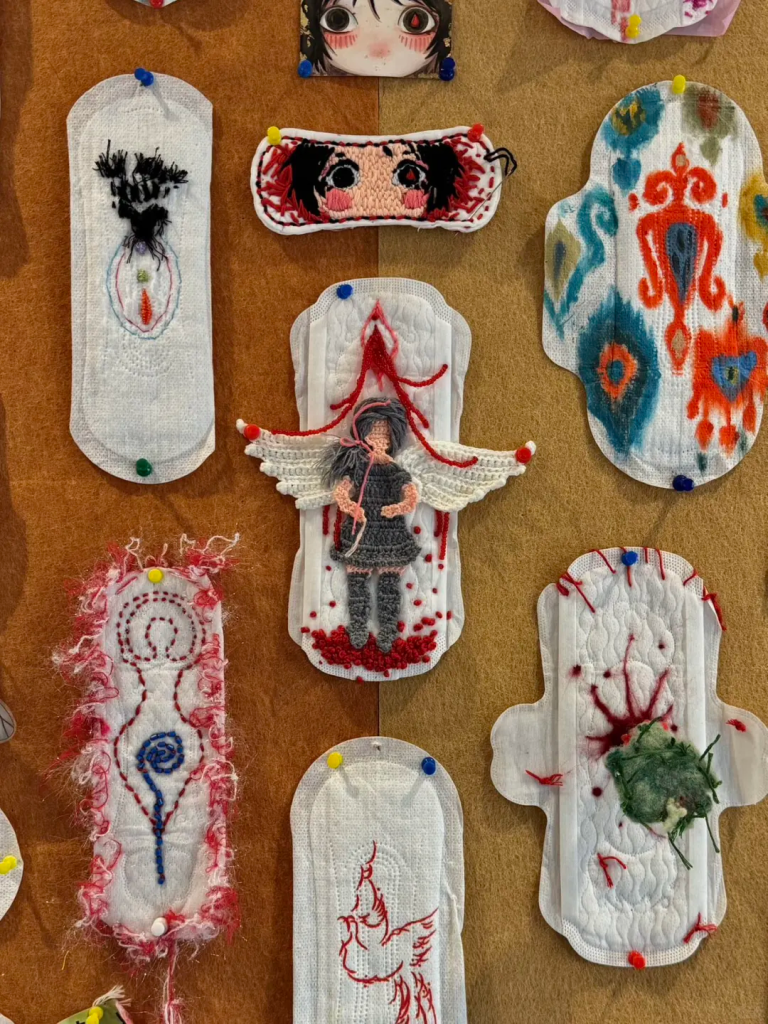




0 Comments